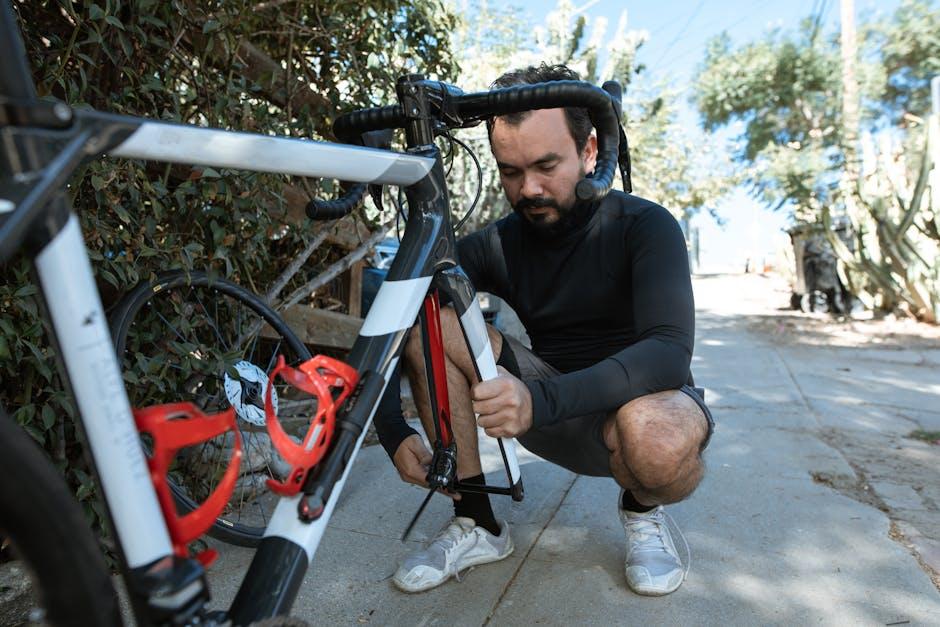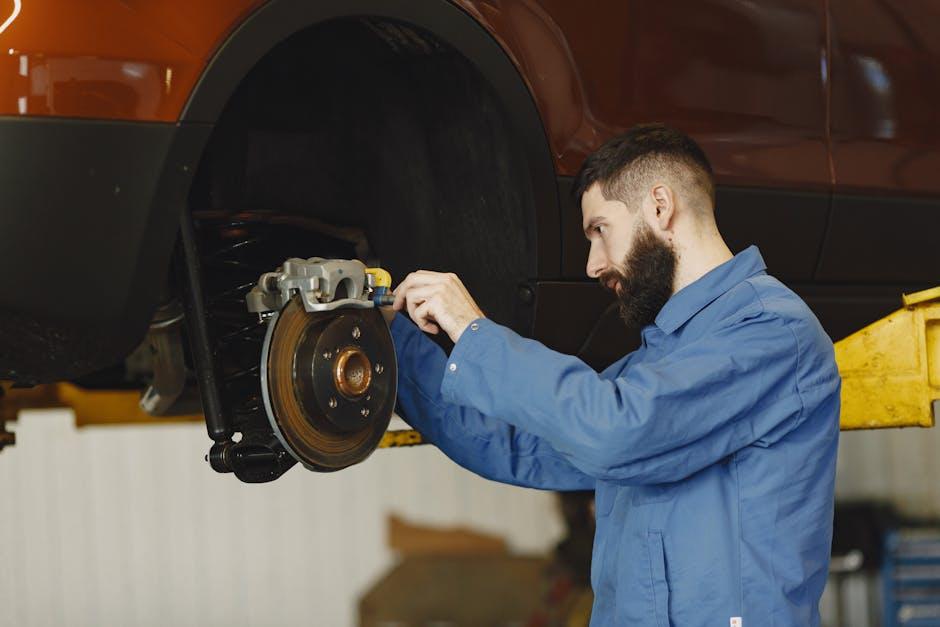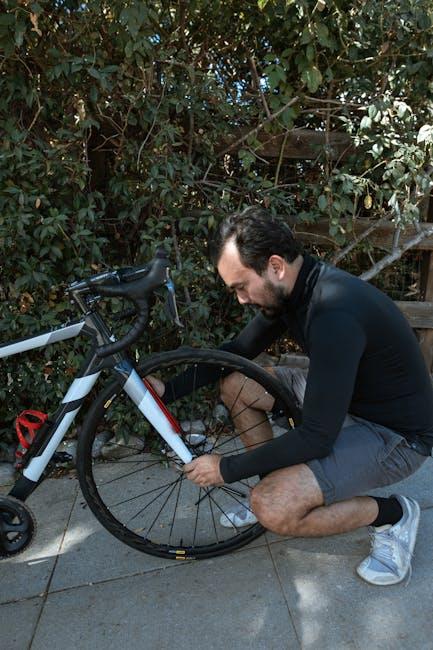When it comes to maintaining your vehicle’s safety and performance, few repairs are as crucial—and as common—as a brake job. But before you roll into the shop, a question often looms: how much does a brake job actually cost? Whether you’re hearing a persistent squeal or feeling a subtle grind, understanding the factors behind brake repair expenses can help you navigate the process with confidence. In this article, we’ll break down the typical costs, what influences pricing, and how to make the most informed decisions when it’s time to hit the brakes on worn-out components.
Table of Contents
- Understanding the Components Involved in a Brake Job
- Factors That Influence the Cost of Brake Repairs
- Comparing DIY Brake Job Costs Versus Professional Services
- How to Choose the Right Brake Pads for Your Vehicle
- Signs That Indicate Your Brakes Need Immediate Attention
- Tips for Budgeting and Saving on Brake Maintenance
- Q&A
- Future Outlook

Understanding the Components Involved in a Brake Job
When tackling a brake job, several key components come into play, each contributing to both safety and overall vehicle performance. At the heart of the system are the brake pads, which press against the rotors to create the friction needed to stop your car. Alongside them, the rotors (or brake discs) are the metal discs that spin with your wheels and wear down over time. Don’t forget the calipers, which house the brake pads and use hydraulic pressure to squeeze them against the rotors. Additionally, brake lines carry the fluid that activates this entire process, while hardware like clips and shims ensures everything stays properly aligned and functions smoothly.
Here’s a quick rundown of the essential parts you might expect in any brake repair or replacement:
- Brake Pads: The friction material, often replaced during a brake job.
- Rotors: The discs that may require resurfacing or replacement depending on wear.
- Calipers: The clamps that push pads against rotors, sometimes refurbished or replaced.
- Brake Fluid: Hydraulic fluid checked and possibly flushed to maintain efficiency.
- Hardware Kits: Includes clips, pins, and springs vital for safe brake function.

Factors That Influence the Cost of Brake Repairs
Several elements contribute to the final bill you receive after a brake repair, making the final cost a moving target rather than a fixed number. The make and model of your vehicle play a significant role since luxury and high-performance cars often require specialized parts and labor. Additionally, the type of brake components installed—such as pads, rotors, calipers, and sensors—will directly affect pricing. For example, ceramic brake pads tend to be pricier than organic ones but offer better performance and longevity. Labor rates also vary depending on your location and the expertise involved, which can shift costs dramatically from one shop to another.
Other factors to consider are the extent of damage and whether additional services are necessary. Brake systems are complex, and what looks like a simple brake pad replacement can sometimes unveil the need for rotor resurfacing or caliper repairs. Moreover, if electronic systems like anti-lock brakes (ABS) or electronic parking brakes are integrated, repairs can require diagnostic time and specialized tools. Here’s a quick glance at what typically influences brake repair costs:
- Vehicle type and age
- Quality and type of brake parts
- Labor complexity and shop rates
- Extent of brake system damage
- Additional diagnostic or electronic system needs
| Factor | Impact on Cost |
|---|---|
| Vehicle Make & Model | High for luxury/performance vehicles |
| Brake Pad Type | Ceramic > Semi-metallic > Organic |
| Labor | Varies by location and complexity |
| Extra Repairs | Rotor resurfacing, caliper replacements added cost |

Comparing DIY Brake Job Costs Versus Professional Services
When deciding between tackling a brake job yourself or opting for professional services, cost is a pivotal factor. A DIY brake job can seem appealing financially, typically involving expenses for parts such as brake pads, rotors, and perhaps hardware kits. By purchasing parts directly, DIY enthusiasts may pay between $50 to $150 for materials, significantly cheaper than a professional service. However, this approach requires the right tools and not to mention time investment, which can be substantial if you’re unfamiliar with the process. Mistakes during installation could lead to costly repairs, turning initial savings into an expensive lesson.
Professional brake services, while generally more expensive upfront, offer distinct advantages worth considering. These include expert diagnostics, warranty coverage, and guaranteed safety, giving drivers peace of mind. Here’s a quick comparison to give you a clearer picture:
| Aspect | DIY Brake Job | Professional Service |
|---|---|---|
| Cost | $50 – $150 (parts only) | $120 – $350 (parts + labor) |
| Time | 2 – 6 hours | 1 – 2 hours |
| Risk | Moderate to High (errors possible) | Low (expertise and guarantees) |
| Tools Required | Complete set necessary | Included in service |
- DIY: Lower initial cost, learning opportunity, high time and effort.
- Professional: Higher cost, fast & accurate, reduced risk, warranty included.

How to Choose the Right Brake Pads for Your Vehicle
Selecting the perfect brake pads isn’t just about grabbing the cheapest option. It requires balancing performance, durability, and compatibility with your vehicle’s specific needs. Start by considering the type of driving you do most: city commutes, long highway trips, or aggressive sporty driving all demand different characteristics. For instance, ceramic brake pads provide quieter operation and less dust, ideal for everyday driving, while semi-metallic pads offer superior stopping power under intense conditions but can be noisier and wear the rotors faster.
Next, pay close attention to your vehicle’s manufacturer recommendations and the quality certifications offered by the brake pad brand. Choosing a pad with the right friction rating for your brake system ensures safety and efficiency. Here’s a quick comparison table to help you decide:
| Brake Pad Type | Best For | Pros | Cons |
|---|---|---|---|
| Ceramic | Daily commutes | Quiet, low dust | Higher cost |
| Semi-metallic | Performance driving | Better heat dissipation | Can be noisy |
| Organic | Classic cars | Soft on rotors | Shorter lifespan |

Signs That Indicate Your Brakes Need Immediate Attention
When your brakes crave attention, they don’t always whisper—they can sound the alarm loud and clear. Pay close attention to any squealing or grinding noises when you press the pedal; these sounds often mean your brake pads have worn dangerously thin. Another red flag is if the brake pedal feels spongy or sinks to the floor, which could indicate issues with brake fluid or a potential leak in the system. Also, if your vehicle pulls to one side while braking or takes longer to come to a stop, it’s time to get those brakes inspected.
Some signs are as subtle as a vibration in the steering wheel or a pulsation through the brake pedal when stopping. These sensations often hint at warped rotors or uneven brake pad wear. Don’t underestimate the power of visual clues—check for brake fluid leaks under your car or worn-down pads visible through the wheel spokes. Ignoring these symptoms can lead to costly repairs and put your safety at serious risk. Here’s a quick checklist to keep handy:
- Unusual noises: Squealing, grinding, or clicking
- Pedal issues: Soft, spongy, or unresponsive feel
- Steering pull: Car veers left or right during braking
- Vibrations: Shaking in pedal or steering wheel
- Visual signs: Fluid leaks, worn pads, or rotor damage

Tips for Budgeting and Saving on Brake Maintenance
Keeping your brake system in top shape doesn’t have to drain your wallet. Start by scheduling regular inspections to catch wear and tear early—this proactive approach can prevent costly repairs down the line. When shopping for parts, consider high-quality aftermarket options that meet or exceed OEM standards; they often provide excellent performance at a fraction of the price. Additionally, learning to recognize the signs of brake wear yourself can save on diagnostic fees and give you leverage when discussing repairs with your mechanic.
Another smart tactic is to bundle maintenance services. Many shops offer discounts if you combine your brake work with other routine services like oil changes or tire rotations. Here’s a quick guide to help you prioritize and save:
- Monitor brake pads: Replace before they hit the metal to avoid rotor damage.
- Compare repair quotes: Don’t settle for the first estimate—prices can vary widely.
- DIY minor tasks: Simple jobs like brake fluid top-offs can be done at home.
- Use reputable shops: Quality service ensures longer-lasting repairs.
| Brake Component | Average Lifespan | Cost-Saving Tip |
|---|---|---|
| Brake Pads | 30,000 – 70,000 miles | Replace early to avoid rotor damage |
| Brake Rotors | 50,000 – 70,000 miles | Resurface instead of replace when thin |
| Brake Fluid | 2 years or 30,000 miles | Flush regularly to prevent system wear |
Q&A
Q&A: How Much Does a Brake Job Cost?
Q: What exactly is included in a standard brake job?
A: A typical brake job usually involves replacing the brake pads and sometimes the rotors. It also includes a thorough inspection of the brake system, cleaning, and applying lubricant to necessary components. Some jobs may also address caliper servicing or brake fluid replacement.
Q: What factors influence the cost of a brake job?
A: Several elements can impact the final price. These include the make and model of your vehicle, the quality of parts used (OEM vs. aftermarket), whether you need just pads or both pads and rotors, labor rates in your area, and the complexity of the brake system itself.
Q: What is the average price range I should expect?
A: On average, a brake pad replacement can range from $150 to $300 per axle, while a more extensive brake job replacing rotors and pads can cost between $300 and $800. High-end or specialty vehicles might cost more due to pricier parts and specialized labor.
Q: Can I save money by doing a brake job myself?
A: If you have the skills, tools, and patience, DIY brake jobs can significantly reduce costs, often just the price of parts plus basic tools. However, brakes are a critical safety component, so if you’re not confident, professional service is highly recommended.
Q: How often should I get my brakes inspected or serviced?
A: It’s wise to have your brakes checked every 10,000 to 15,000 miles or as indicated in your vehicle’s manual. Warning signs like squealing, grinding noises, or a soft brake pedal should prompt immediate inspection.
Q: Are cheaper brake jobs safe?
A: Lower prices sometimes mean lower quality parts or rushed labor, which can compromise safety and longevity. It’s essential to balance cost with quality and trustworthiness of the mechanic or shop.
Q: Is it better to replace rotors along with brake pads?
A: If the rotors are worn, scored, or warped, replacing them alongside pads is best to ensure smooth braking and prolong pad life. Some rotors can be resurfaced if the damage is minor, which can save cost but may not always be possible.
Q: Do electric or hybrid cars affect brake job costs?
A: These vehicles often use regenerative braking systems that reduce wear on traditional brakes, sometimes lowering replacement frequency and cost. However, specialized parts and knowledge may increase labor costs.
This Q&A provides a well-rounded overview of brake job costs with a balanced tone and creative clarity to guide drivers through their brake maintenance decisions.
Future Outlook
In the end, the cost of a brake job is as variable as the roads you travel—shaped by vehicle type, parts quality, and labor rates. While the numbers on the invoice might differ, investing in reliable brakes is a non-negotiable safeguard for your journey. Understanding the factors behind the price helps you make informed choices, ensuring your stops are as smooth as your drives. After all, when it comes to brakes, peace of mind is the best kind of value.
